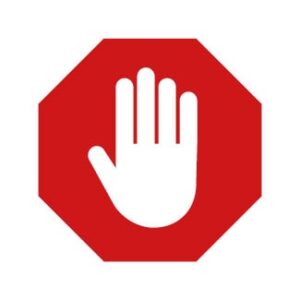18 Jan Icons: use conventions and keep it simple

Icons: Use conventions and keep it simple
Written by: Carien Franken
You want to use an icon but can’t find a matching one, because it’s not totally in line with your subject? Or you want to be authentic, instead of using all these conventional, maybe boring icons, you’ve seen thousand and thousand times again? Before you rack your brain finding the perfect icon, you can better read this article.
Why icons?
The main reason to use icons is because you want to give a first strong visual clue what your information is about. Second, you want your audience to recall this information quickly when they see the icon again.
The more complex the image is, the longer it will take for your brain to scan and recognize it. However, with a simple image we’ve seen before, it only takes a split second to link it to its meaning. And that’s what we are going for!
This is why traffic signs are simple, or even abstract, symbols. You don’t want to think about the meaning of a traffic sign while driving 120 km/h, you want to instantly recognize it and recall the information/ meaning.


The same holds for scientific information. Wouldn’t it be great if we all used the same icons to indicate the sections in our publications? Or specific icons to indicate significant and non-significant results…? Reading scientific articles would be so much easier!
But hey, what about the little asterisk(*) we already use for significant results!? Yes, we have our icon! Our suggestion would be to show the icon not only in the figures, but also in the margin next to the paragraph in which the significant result is discussed.
Finding your ultimate icon
So next time you need to find a good and effective icon to tell your story:
- Don’t be afraid to use conventional icons. They are easy to recognize and give a quick overview of your information (and in the end that’s what you want)
- Keep it simple. Sometimes this means that you have to choose to keep it simple instead of a totally perfect match.
Where to find your icons
There are numerous websites where you can find icons. However, check if you can use the icon freely, pay for the icon or reference it. Check the following websites for a tremendous amount of icons:
Researchers in the field of biology, medicine, lab research etcetera might find their icons and illustrations on www.biorender.com (not royalty free for publication).
If you’re mainly searching for inspiration, you can of course use Google Images. Just search your ‘keyword’ and add ‘icon’. If you want to find icons that are royalty free, make sure to use the filter to limit your search to the free ones (find the filter under ‘tools’).
A perfect world
And yes … of course, simple AND totally matching is the perfect combination, but unfortunately we don’t live in a perfect world, so the chance of finding your ultimate icon is limited. Maybe draw your own during our illustration course?
